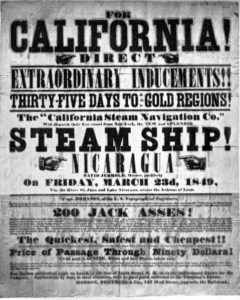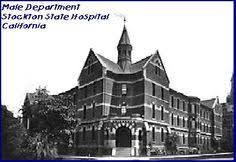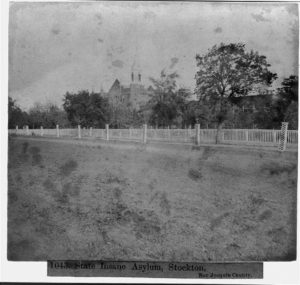
Many Eager Dreamers Rushed to California in 1849
The idea that asylums were necessary had been widely accepted in America by the middle of the nineteenth century. Even far-flung regions like California provided for the care of the insane; it established an asylum at Stockton in 1853, only a few years after the 1849 gold rush.
Creating an asylum called for relevant legislation, and California’s first general law regarding the insane gave the responsibility for proper commitment to county judges:
“. . . [the judge shall] upon the application of any person under oath, setting forth that any person by reason of insanity was unsafe to be at large, or was suffering from mental derangement, forthwith cause the said person to be brought before him and cause to appear two reputable physicians, to examine the alleged insane person . . . .”
Though it seems that just about anyone prepared to swear to another’s insanity could begin the application process for commitment, this young state (created just three years earlier in1850) commendably included some practical safeguards. First, the initiator’s desire was not enough to force a commitment, and that person had to go through government channels to continue the process–surely a deterrent to some cases of spite or malice.
Second, not only did the two required physicians have to examine the proposed patient and declare him/her insane, they had to certify under oath that the diagnosis was correct. Then, it was still the judge’s decision to commit the person, based largely on the premise that the suspected person was not safe to be at large. The expenses incurred by any person so committed would be born by the state–and that even included expenses for the patient’s travel to the asylum. The latter may not have been an extremely powerful deterrent against frivolous commitments, but presumably judges in a newly functioning state would be careful about committing people to Stockton without considering the drain on public funds.
Most state institutions were designed primarily to help the poor, though many did take paying patients. California followed this pattern and allowed the non-indigent into its state asylums. However, the State Commission in Lunacy was to collect any appropriate charges for these latter patients, and could “bring action to recover such charges.”

Building at Stockton State Hospital

Old Photo of Stockton State Hospital